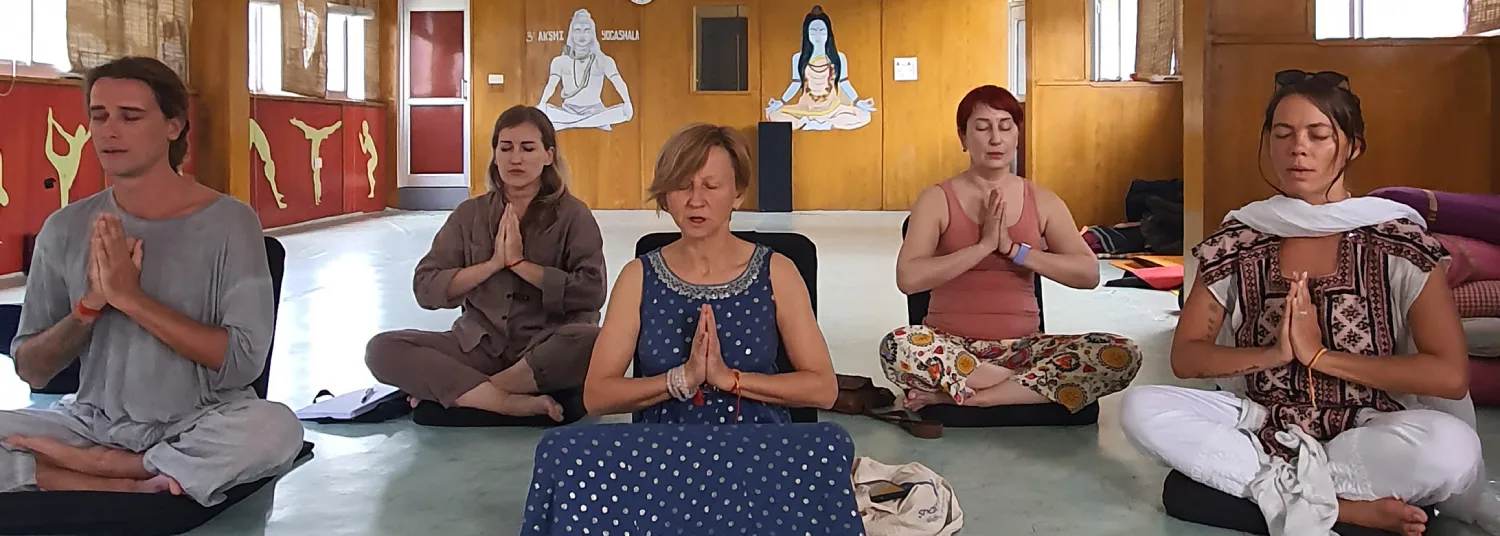We all live in a hectic world full of stress and distractions, and achieving some peace of mind seems like a dream. Meet Yoga Nidra- a life-changing practice that will welcome you to the place of deep relaxation and self-exploration. Also known as yogic sleep, this age-old practice transcends regular sleep, as it is a special state of mindfulness and deep relaxation, which leaves the body and the mind refreshed. Regardless of whether you are an experienced Yogi or you are new to the wellness scene, this ultimate guide will demystify the secrets of Yoga Nidra and provide you with insight into its potent powers and effective practices. Are you prepared to take your mindfulness meditation venture into a relaxed state of calmness, inner harmony, and bodily health? Then what are you waiting for? Your ticket to a blissful slumber is awaiting!
Introduction to Yoga Nidra: What is it and how is it different from traditional yoga?
Have you ever been so tired, and still can not turn off your brain? In the world where we have constant distractions and endless responsibilities it might appear that we never find time to relax. Introducing Yoga Nidra- a practice that brings you to the place of profound relaxation yet you remain awake and conscious. As opposed to traditional yoga that mostly concentrates on the physical poses, Yoga Nidra involves taking the practitioners through a consciousness journey. It is one of the most potent methods to relax the body and the mind in a kind of changes lives. So, come with us on a journey to the depths of this ancient practice and discover its peculiarities and outstanding advantages that may alter the way you see rest eternally.
The Science behind Yoga Nidra: How does it work?
Yoga Nidra exists in a borderline between sleeping and awake state. This is a state that triggers ultimate relaxation, as it involves both body and mind in a special manner.
As practitioners achieve this deep meditative state, their brainwave patterns change or alter to alpha and then to theta waves. Such transitions play an essential role in the access to more profound rates of consciousness. The level of stress is reduced in this area.
The exercise activates the parasympathetic nervous system, which helps to heal and regenerate. The heart rate decreases, and breath deepens and becomes more rhythmical.
Even hormonal balances are modified during the Yoga Nidra sessions because the level of cortisol decreases and contributes to eliminating the symptoms of anxiety or depression. This is the physiological reaction behind much of its emotional pros.
It has been proven by neuroscience that our daily practice can leave permanent changes in our brain structure, improving the parts connected with memory, empathy, and emotional control. The science of Yoga Nidra discloses the potent instrument of self-change.
Also Read : 200 Hour Hatha Yoga Teacher Training in Rishikesh
Benefits of Yoga Nidra: Physical, emotional, and mental benefits
The list of the benefits of Yoga Nidra is too long to stay only on the mat. physically, it allows a state of deep relaxation, allowing it to relieve tension and lessen chronic pain. The participants usually complain less about the quality of their sleep and have more energy during the day.
On the emotional level, the practice promotes emotional strength and self-awareness. When you start to explore your subconscious, you may encounter unresolved emotions, which can be healed, and give way to self-development. This practice brings about a feeling of peace and steadiness in the midst of life troubles.
At the mental level, Yoga Nidra improves concentration and helps to increase creativity, silencing the mind chatter. It develops mind clarity and decreases anxiety and stress. A daily routine enables one to connect with their inner knowing, and thus the decision-making processes can be more intuitive.
These benefits are holistic in nature which renders Yoga Nidra to be a priceless practice to any individual desiring to establish balance in life.
Steps to Practice Yoga Nidra: A detailed guide on the techniques and postures
To perform Yoga Nidra, you need to have some quiet place where you can comfortably lie down. Support your body on a yoga mat or a soft surface.
Begin by correcting your posture. Laying on your back, ensure your arms are by your side with palms facing up. Make sure that the shoulders are lowered beyond the ears and the spine is straightened.
Then, you should close your eyes and breathe in and out. Concentrate on relaxing all the body parts starting with the toes to the tip of your head.
After settling, do establish an intention or Sankalpa of the practice; it will assist you in this journey. Gently transition into breath and body awareness non-judgmentally.
Remain in this condition between 20-40 minutes and let the thoughts come and go around you. The most important thing is not to strain yourself by trying to be still but to accept anything that comes up in this practice.
Tips for Beginners: How to prepare for a successful Yoga Nidra session
Creating a calm environment is key for a successful Yoga Nidra session. Choose a quiet space free from distractions. Dim the lights or use soft, ambient lighting to promote relaxation.
Comfort is essential. Wear loose, breathable clothing and have props like cushions or blankets on hand for support. These can help you settle into your position more comfortably.
Set an intention before starting your practice. This could be anything from seeking clarity to finding peace within yourself. An intention helps anchor your mind during the session.
Timing matters too; find a time when you feel alert but relaxed enough to indulge in deeper states of consciousness. Early mornings or late evenings often work best.
Lastly, approach it with an open heart and mind—release any expectations about the experience itself. Embrace whatever unfolds during your journey into Yoga Nidra.
Also Read : 300 Hour Yoga Teacher Training in Rishikesh
Incorporating Yoga Nidra into Your Daily Routine: Different ways to integrate it into your lifestyle
Integrating Yoga Nidra into your daily routine can be seamless and rewarding. Start by setting aside a specific time each day, perhaps early morning or before bed. This consistency helps create a calming ritual.
Consider using guided recordings to ease you into the practice. There are plenty of apps and online resources available that cater to all experience levels.
You can also enhance your sessions with soothing ambient music or nature sounds in the background, making it easier to relax and focus inward.
If you’re pressed for time, even short 10-minute sessions can be beneficial. Just find a quiet space where you won’t be disturbed.
Lastly, don’t hesitate to incorporate this practice into group settings—whether at home with family or during breaks at work. Sharing the experience can deepen connections while promoting relaxation together.
Common Misconceptions About Yoga Nidra: Addressing myths and misconceptions
Yoga Nidra is often mistaken by many to be sleep. Although it includes relaxation, the practice is not a state of sleeping. Participants are mindful and awake, and they can reach lower consciousness.
The other myth indicates that Yoga Nidra practice is exclusive to the advanced. The truth is that its techniques can be helpful to anyone, irrespective of the experience or flexibility.
Others think it is a fancy sleep. However, Yoga Nidra provides deep psycho-emotional effects with the help of visualization and setting of intentions.
There is also the myth that one has to follow certain poses or environment. Contrary to conventional yoga, this process is more comfortable than formal; one can even lie down in any posture which is comfortable.
Finally, most believe that practices such as this are merely spiritual endeavors. They contain spiritual components but can also be used in everyday life by relieving stress and increasing concentration, which can be beneficial to anyone.
Conclusion: The transformative power of Yoga Nidra and how it can benefit your overall well-being.
Yoga Nidra is an amazing experience of relaxation and self discovery. It is an ancient tradition that goes beyond regular yoga practice as it teaches the practitioner to enter the state of conscious sleep, where the deep rest is received without any physical effort. It is a special kind of meditation with the help of which people can receive the transformative dividends which can reach all areas of their lives.
Scientific studies attest to its success in lowering stress levels, anxiety and increasing emotional strength. With a regular practice, you may find mental clarity, increased creativity, and inner peace. It is an escape to the craziness of everyday life, and one can rejuvenate on many levels, physical, emotional, and spiritual.
The practice of Yoga Nidra is available to all. Yoga practices present a chance of healing and reflection whether you are a beginner or an advanced participant. With the help of these easy-to-follow practices, which you can add to your daily life, such as by building a peaceful atmosphere or setting aside some time every day, you will welcome positive transformation into your life.
The legends attached to Yoga Nidra usually make human beings fail to explore its advantages to the maximum. But when you know what it is really about, then these misconceptions disappear and the doors will open to an experience that allows personal development.
Yoga Nidra is all about accepting yourself, and jumping on the tracks of becoming more self-aware and in touch with your body and your mind. The more you delve into this nourishing practice, you will probably discover that it is not only good for well-being but it also opens the daily life to mindfulness. It is your path now; make those initial small steps towards exploring everything that Yoga Nidra can give you.


